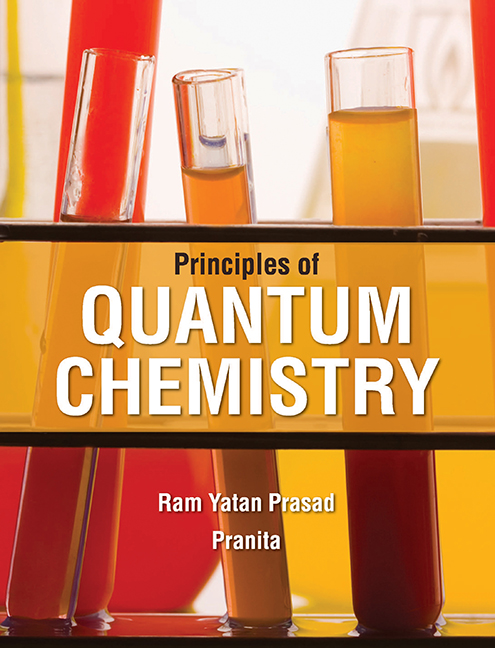Book contents
- Frontmatter
- Dedication
- Contents
- List of Figures
- List of Tables
- Foreword
- Preface
- 1 Quantum Theory
- 2 Wave–Particle Duality
- 3 Mathematical Techniques
- 4 Quantum Mechanical Operators
- 5 Postulates of Quantum Mechanics
- 6 The Schrödinger Equation
- 7 Playing with the Schrödinger Equation
- 8 Hydrogen Atom
- 9 Approximate Methods
- 10 Diatomic Molecules
- 11 Multi-electronic Systems
- 12 Polyatomic Molecules
- 13 Hückel Molecular Orbital Theory/Method
- 14 Density Functional Theory
- Glossary
- Appendix I
- Appendix II
- Appendix III
- Model Question Papers
- Index
4 - Quantum Mechanical Operators
Published online by Cambridge University Press: 02 December 2022
- Frontmatter
- Dedication
- Contents
- List of Figures
- List of Tables
- Foreword
- Preface
- 1 Quantum Theory
- 2 Wave–Particle Duality
- 3 Mathematical Techniques
- 4 Quantum Mechanical Operators
- 5 Postulates of Quantum Mechanics
- 6 The Schrödinger Equation
- 7 Playing with the Schrödinger Equation
- 8 Hydrogen Atom
- 9 Approximate Methods
- 10 Diatomic Molecules
- 11 Multi-electronic Systems
- 12 Polyatomic Molecules
- 13 Hückel Molecular Orbital Theory/Method
- 14 Density Functional Theory
- Glossary
- Appendix I
- Appendix II
- Appendix III
- Model Question Papers
- Index
Summary
Before taking into consideration the quantum mechanical operators, it is perhaps the best to clear the meaning of the term operator in the mathematical sense. The term operator may be defined in the following manner:
An operator is a symbol, which represents a mathematical operation to be carried out on a specific operand.
or
An operator is a symbol that tells to do something to whatever follows the symbol.
or
An operator may be defined as a short-hand notation for a set of well-defined mathematical operations to be carried out on a function (called the operand).
or
An operator conveys the instruction to carry out operation on a function.
or
An operator is defined as a symbol of mathematical procedure, which alters one function into another.
or
A mathematical entity that acts to transform various functions of the independent variables to different functions of these variable.
It means, operator. function = new function
Here symbol d/dx is an operator that alters the function sin x into first derivative with respect to x, i.e., cos x.
Similarly, the symbol () is an operator, the instruction being to take the square root of the quantity, which follows it. For example, if a number, say 25, is kept under operator (), it alters 25 into its square root, i.e., 25 = 5. Addition, subtraction, multiplication, division, log, differentiation, integration, etc., are also operators. It is to be noted that the operators always operate on the function written to the right of them and the operator has no physical significance if written alone.
An operator is normally written with a cap sign (ˆ) overhead, e.g., Â. Thus,  represents an operator. To make it clearer, if we write  f (x) = g(x), it means  is an operator operating on the function f (x). g(x) is an another function, which is a new one obtained after the operation of operator  on the function f (x).
If  = d/dx and f (x) = ax2, then  f (x) = d/dx(ax2) = 2ax = g(x). Similarly, we can cite other examples similar to the above.
- Type
- Chapter
- Information
- Principles of Quantum Chemistry , pp. 106 - 150Publisher: Foundation BooksPrint publication year: 2014

